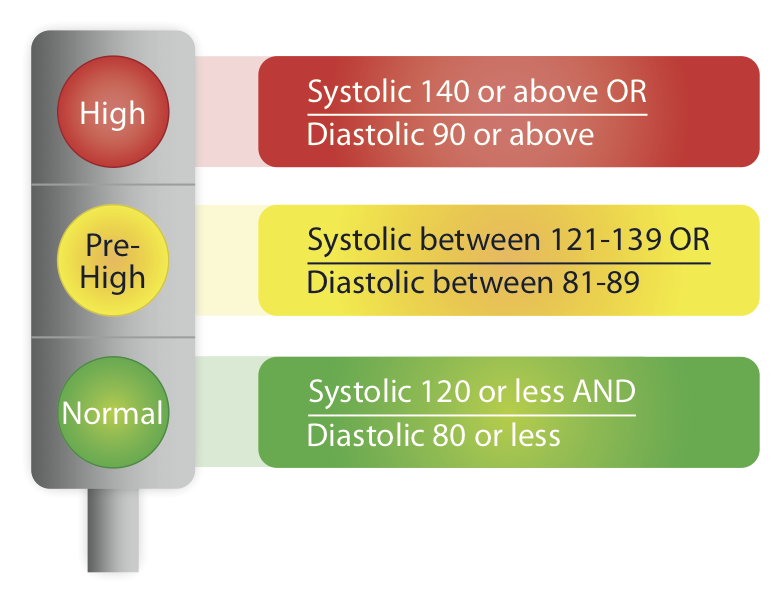What Is “Normal Blood Pressure” or “Safe Blood Pressure?”
Normal blood pressure is typically a systolic reading of less than 120 mmHg and a diastolic reading of less than 80 mmHg, often reported as 120/80 mmHg. Systolic values over 120 mmHg and diastolic values over 80 mmHg fall into pre- and hypertensive stages.1
As for what is “safe blood pressure”, the answer to this question is not as straightforward as one might think. It turns out that the higher the blood pressure, the more damage it does to the body’s organs. And, the higher the blood pressure, the more aggressively it should be treated. The earlier you start “treating” high blood pressure, the easier it is to control and the less damage it does to your body.

Like most medical problems, there are guidelines for blood pressure. Normal blood pressure is a systolic reading of less than 120 and a diastolic reading of less than 80, often report as 120/80. Guidelines are as follows:
Blood Pressure |
Description |
|
| Systolic (mm Hg) | Diastolic (mm Hg) | |
| <90 | <60 | Hypotension |
| 90-119 | 60-79 | Ideal |
| 120-139 | 80-89 | Prehypertension |
| 140-159 | 90-99 | Hypertension (Stage 1) |
| 160-179 | 100-109 | Hypertension (Stage 2) |
| >180 | >110 | Hypertension (Stage 3) |




